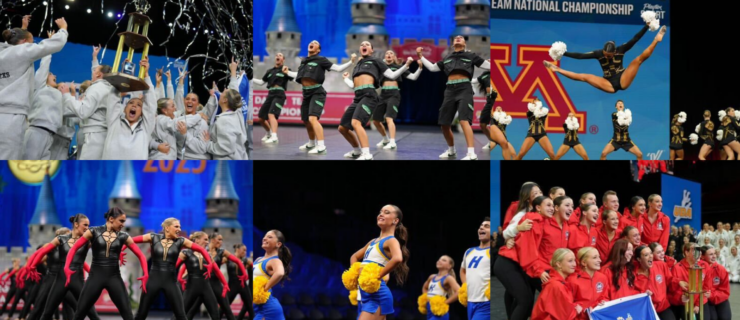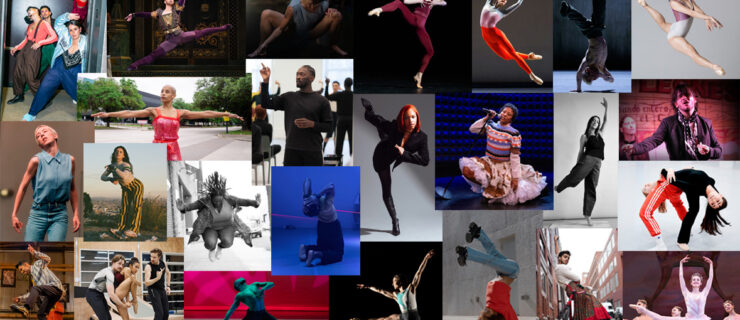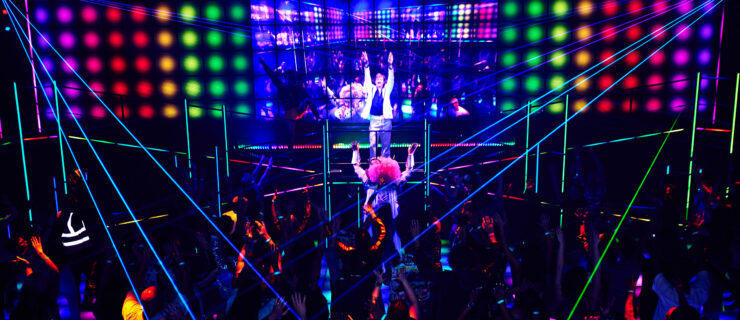The Paris Opéra Ballet School
“Don’t stiffen up, Victoire! Bend your legs. Allez! You have to stretch and bend. You are tense. Breathe, smile, concentrate! Tighten your back—you won’t need as much power from your legs. Do your feet hurt today?”
It’s a July afternoon, and the sun is streaming into the Serge Golovine studio at the Paris Opéra Ballet School. Carole Arbo, a retired POB étoile (“star” in French) and a former student of the school, is leading her senior students through the final steps of the variation d’étoile in Rudolf

Nureyev’s Raymonda, giving a relentless stream of corrections.
Sound intense? This is just a normal day at the Paris Opéra Ballet School’s Nanterre campus, which includes 10 dance studios. The vast complex, built in 1987, is nestled in a large park just a short train ride away from the center of Paris. The campus features three distinct areas: the academic wing, complete with classrooms for study; the dance wing, with its magnificent winding staircase; and the dormitories, where students sleep two or three to a room.
In all classes held on this sprawling campus, the French style is ever-present. The academy honors its 18th-century aristocratic origins—it was established in 1713 by Louis XIV—while also incorporating 19th-century Italian dance and 20th-century Russian technique. This mix is further colored by the influence of Rudolf Nureyev, who ran the POB from 1983 to 1989.
Trademarks of the style include the clarity of the épaulement and port de bras, which are slightly rounder than the Russian style, yet not as round as the Danish style. Elegance and strength are emphasized, as is the precision of the footwork. But while all of these aspects represent a French dancer, petite batterie is indisputably the POBS’s signature. For Elisabeth Platel, a former POB étoile and current director of the school, “it’s an essential part of the training. We do sauts, assemblés, petites batteries all the time, all the time, all the time!”
That quick petite batterie was frightening to current American Ballet Theatre principal David Hallberg, who in 1999 was admitted to the school by former director Claude Bessy. It took him nine humbling months to finally get a handle on the dreaded petit allegro. “It was almost impossible!” he remembers. “The kids there just pulled it off. The faster it got, the smaller they danced. They didn’t look tense while they were doing it. Their upper bodies were so calm, but their legs were moving like lightning. It was amazing to watch!”
Although the POBS doesn’t have a written curriculum, the school’s classical teachers, all former POB dancers, are expected to communicate their skills. And they have a lofty goal: By their last year at the academy, students should be capable of dancing any principal role from any of the ballets in the company’s large repertoire. Even then, only two or three from a graduating class of 11 will be lucky enough to enter the company.
For Wilfried Romoli, an instructor who began teaching eighth-grade boys in 2008, the experience is daunting, but rewarding. “I teach them what Nureyev taught me: a focus on placement and orientation,” he says. “If you don’t know your directions on the ground, how are you going to know where to go in the air?”
Now in her senior year, dancer Victoire Debay has a good command of the basics but is tackling another difficult part of her education: personalizing her technique. “We have to have an individual style and demonstrate our artistic interpretation of the steps. That’s something the teachers expect of us but that they don’t teach us specifically.” Rémy Catalan, a fellow senior, finds this approach liberating: “It helps me stop worrying about how well I’m dancing and get beyond myself.”
This performance quality, honed in class and in individual study, is put to use throughout the year. The students, affectionately referred to as “les petits rats” (a name probably inspired by the sound of their pattering feet on the rehearsal studio floor, once located in the attic above the Palais Garnier stage), perform throughout the year. They dance in a range of productions—from Démonstrations, a unique display of classroom work created by Claude Bessy in 1977, to guest appearances in repertory performances. Small parts in The Nutcracker and Raymonda are also on the students’ schedules. But the highlight of the POBS performance calendar is the annual year-end showcase. In full costume at the Palais Garnier, the POBS pupils perform variations from La Sylphide, Coppélia, or any of the 40 ballets that make up the POBS repertoire.
However glamorous that sounds, what students really need to succeed at the POBS, according to Arbo, is grit and determination. “Sure, you need great physical potential,” she says, “but you really have to have the mental strength to match. You have to be open and positive; you don’t get anywhere with a student who is a negative thinker. And you have to love tight rules. The severity here is intense and the schedule is demanding, but the students love it.”
Fast Facts
Number of students:
138
Age of students:
9-17
Auditions:
An initial selection process focuses on the dancers’ physical shape, flexibility and size, while a second, more rigorous process narrows the group down to the chosen students.
International Bounds:
Students from eight nations, including Italy, Korea and Ukraine, currently attend the school.
Life at POBS
6:45 am:
wake up
7 am:
breakfast
8 am:
academics begin
10:30 am:
short break
Noon:
lunch
1:30 pm:
classical dance lesson
3:15 pm:
rotating classes on variations or style
4:30 pm:
break and snack
5:00 pm:
dance theory for older students, musical instruction for younger dancers
6:30 pm:
dinner
7:30 pm:
free time, quiet study
9:00 pm:
lights out
Students can phone home twice daily. Down time is spent playing ping-pong or watching dance films. Group outings are sometimes organized to see a Paris Opéra Ballet dress rehearsal or to go to the movies.
Where can you see and learn the POB style near you?
Pierre-François Vilanoba is a POBS graduate dancing in the San Francisco Ballet, while Adrienne Schulte and Sean Stewart of the American Ballet Theatre both studied at the Nanterre school. Rachel Rufer is currently dancing for the Grands Ballets Canadiens de Montréal and François Perron is managing artistic director of the Manhattan Movement and Arts Center, where they teach French ballet technique. Fabrice Herrault also teaches the POB style at Steps on Broadway in NYC.
How can you incorporate French technique into your dancing?
Concentrate on cleanliness and clarity. Work on a tight 5th position. Place the arms so that they slope slightly from the shoulders. In order to move quickly during petite batterie, keep your step light and let the momentum of the music carry you.
Photos by David Elofer




